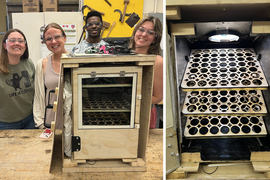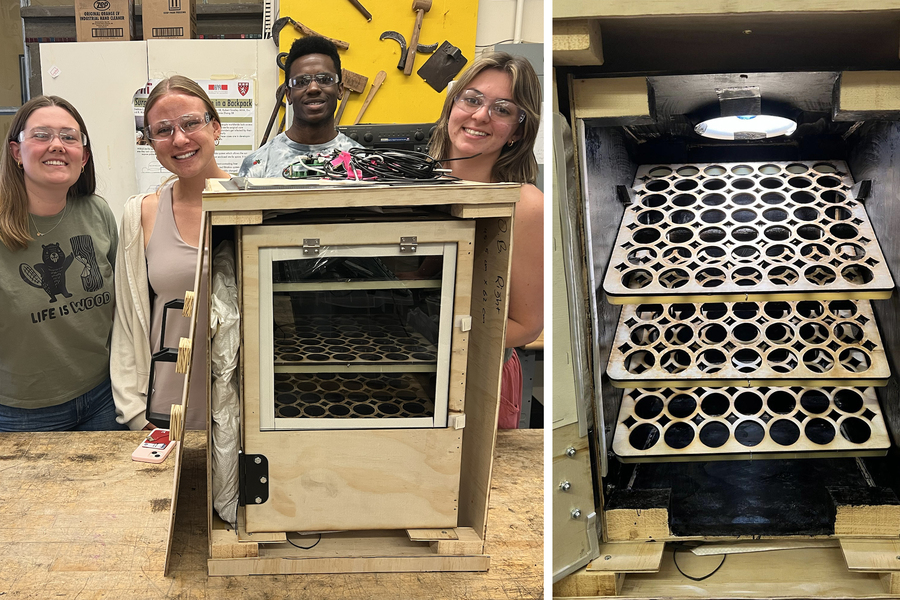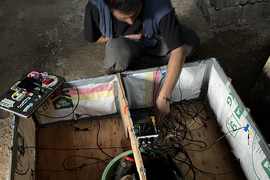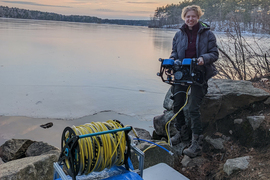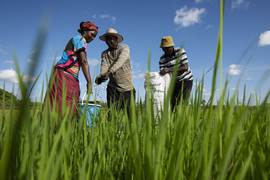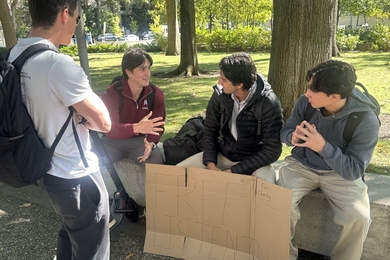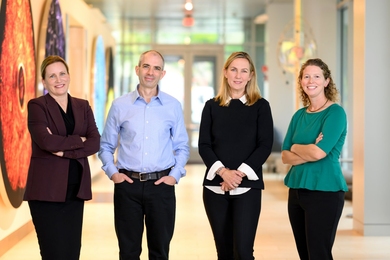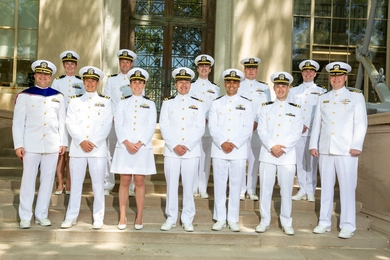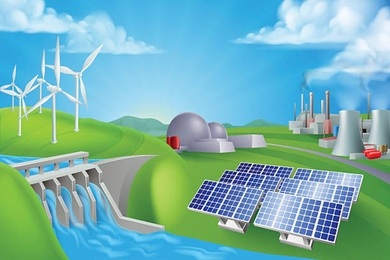This semester, MIT D-Lab students built prototype solutions to help farmers in Afghanistan, people living in informal settlements in Argentina, and rural poultry farmers in Cameroon. The projects span continents and collectively stand to improve thousands of lives — and they all trace back to two longstanding MIT D-Lab classes.
For the last seven years, 2.651 / EC.711 (Introduction to Energy in Global Development) and 2.652 / EC.712 (Applications of Energy in Global Development) have paired students with international organizations and communities to learn D-Lab’s participatory approach to design and study energy technologies in low-resource environments. Hundreds of students from across MIT have taken the courses, which feature visits from partners and trips to the communities after the semester. They often discover a passion for helping people in low-resource settings that lasts a lifetime.
“Through the trips, students often gain an appreciation for what they have at home, and they can’t forget about what they see,” says D-Lab instructor Josh Maldonado ’23, who took both courses as a student. “For me, it changed my entire career. Students maintain relationships with the people they work with. They stay on the group chats with community members and meet up with them when they travel. They come back and want to mentor for the class. You can just see it has a lasting effect.”
The introductory course takes place each spring and is followed by summer trips for students. The applications class, which is more focused on specific projects, is held in the fall and followed by student travel over winter break.
“MIT has always advocated for going out and impacting the world,” Maldonado says. “The fact that we can use what we learn here in such a meaningful way while still a student is awesome. It gets back to MIT’s motto, ‘mens et manus’ (‘mind and hand’).”
Curriculum for impact
Introduction to Energy in Global Development has been taught since around 2008, with past projects focusing on mitigating the effects of aquatic weeds for fisherman in Ghana, making charcoal for cookstoves in Uganda, and creating brick evaporative coolers to extend the shelf life of fruits and vegetables in Mali.
The class follows MIT D-Lab’s participatory design philosophy in which students design solutions in close collaboration with local communities. Along the way, students learn about different energy technologies and how they might be implemented cheaply in rural communities that lack basic infrastructure.
“In product design, the idea is to get out and meet your customer where they are,” Maldonado explains. “The problem is our partners are often in remote, low-resource regions of the world. We put a big emphasis on designing with the local communities and increasing their creative capacity building to show them they can build solutions themselves.”
Students from across MIT, including graduates and undergraduates, along with students from Harvard University and Wellesley College, can enroll in both courses. MIT senior Kanokwan Tungkitkancharoen took the introductory class this spring.
“There are students from chemistry, computer science, civil engineering, policy, and more,” says Tungkitkancharoen. “I think that convergence models how things get done in real life. The class also taught me how to communicate the same information in different ways to cater to different people. It helped me distill my approach to what is this person trying to learn and how can I convey that information.”
Tungkitkancharoen’s team worked with a nonprofit called Weatherizers Without Borders to implement weatherization strategies that enhance housing conditions and environmental resilience for people in the southern Argentinian community of Bariloche.
The team built model homes and used heat sensing cameras to show the impact of weatherization strategies to locals and policymakers in the region.
“Our partners live in self-built homes, but the region is notorious for being very cold in the winter and very hot in the summer,” Tungkitkancharoen says. “We’re helping our partners retrofit homes so they can withstand the weather better. Before the semester, I was interested in working directly with people impacted by these technologies and the current climate situation. D-Lab helped me work with people on the ground, and I’ve been super grateful to our community partners.”
The project to design micro-irrigation systems to support agricultural productivity and water conservation in Afghanistan is in partnership with the Ecology and Conservation Organization of Afghanistan and a team from a local university in Afghanistan.
“I love the process of coming into class with a practical question you need to solve and working closely with community partners,” says MIT master’s student Khadija Ghanizada, who has served as a teacher’s assistant for both the introductory and applications courses. “All of these projects will have a huge impact, but being from Afghanistan, I know this will make a difference because it’s a land-locked country, it’s dealing with droughts, and 80 percent of our economy depends on agriculture. We also make sure students are thinking about scalability of their solutions, whether scaling worldwide or just nationally. Every project has its own impact story.”
Meeting community partners
Now that the spring semester is over, many students from the introductory class will travel to the regions they studied with instructors and local guides over the summer.
“The traveling and implementation are things students always look forward to,” Maldonado says. “Students do a lot of prep work, thinking about the tools they need, the local resources they need, and working with partners to acquire those resources.”
Following travel, students write a report on how the trip went, which helps D-Lab refine the course for next semester.
“Oftentimes instructors are also doing research in these regions while they teach the class,” Maldonado says. “To be taught by people who were just in the field two weeks before the class started, and to see pictures of what they’re doing, is really powerful.”
Students who have taken the class have gone on to careers in international development, nonprofits, and to start companies that grow the impact of their class projects. But the most immediate impact can be seen in the communities that students work with.
“These solutions should be able to be built locally, sourced locally, and potentially also lead to the creation of localized markets based around the technology,” Maldonado says. “Almost everything the D-Lab does is open-sourced, so when we go to these communities, we don’t just teach people how to use these solutions, we teach them how to make them. Technology, if implemented correctly by mindful engineers and scientists, can be highly adopted and can grow a community of makers and fabricators and local businesses.”
